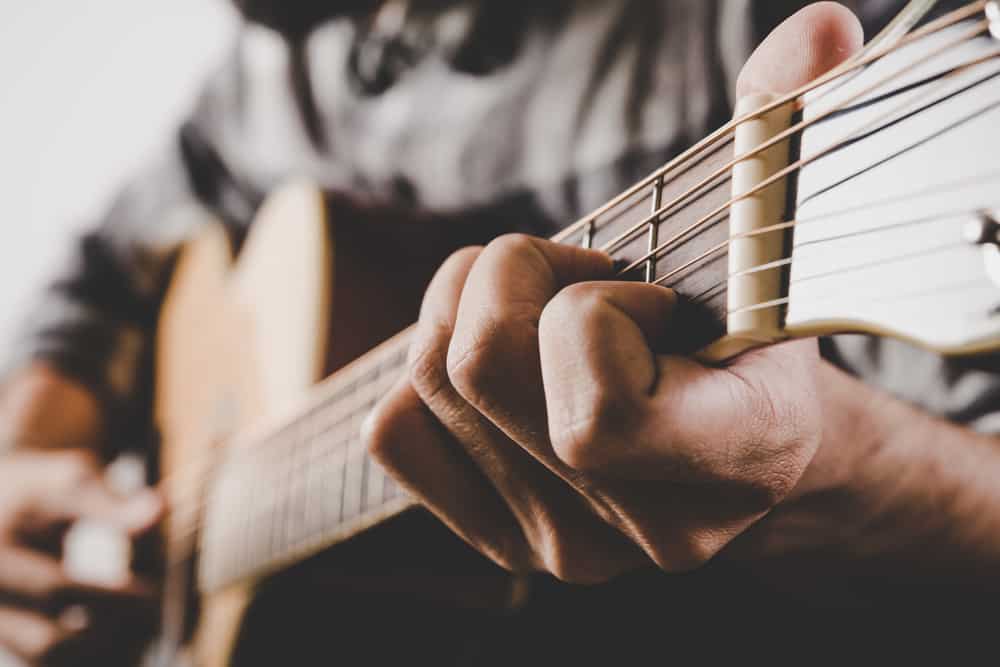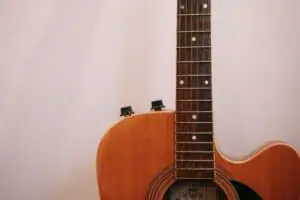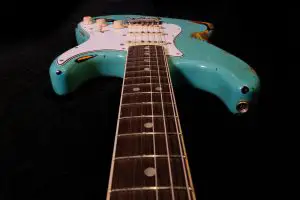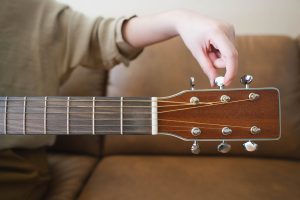
If you have a guitar, you must have tried to play some basic melodies on it, and you must have played them well. However, if you’re not able to play a song using your imagination or a music tutorial, it means you lack improvisation.
Improvisation on guitar means creating a rhythm in your mind and naturally executing it using your guitar. This whole process happens naturally, just like you’re talking to someone.
But the real problem is that things are easier said than done. It’s very easy to define improvisation and understand its meaning. However, learning this skill demands a lot of time and practice for most people.
This article will describe the best ways to learn how to improvise on a guitar.
Learning to Improvise on Guitar
Just like learning any other skill, being able to improvise on guitar also has a learning curve.
Just like you can’t become a hardcore performer overnight.
For this purpose, you’ll have to follow a continuous routine until you develop confidence in your skills. Following are the steps that will help you become better at improvising.
Do Your Homework First

Before you get your hands on the guitar, you should have complete knowledge of the instrument. You must know the names of all chords and notes present on the guitar fretboard.
Memorize Different Songs
Playing good music starts by listening to good music. You should listen to songs in different genres and try to memorize the rhythms and melodies present in the songs.
Once you remember all the ups and downs of the song, match those with the notes you have just learned and try to play them on the guitar.
It will feel like a hit-or-miss situation at first, but after a while, you’ll start remembering the position of each note on the fretboard. That is undoubtedly the first step toward improvisation.
Apply the Knowledge
After getting familiar with the chords and notes, you should start getting creative. Try to play a rhythmic melody with simple up and down combinations. You can also practice some techniques that include the repetition of notes.
Put Your Knowledge To Practice

Okay, so now that you have been learning the theoretical stuff for a few days, you’re ready to start practicing. The best way would be to stick to some simple exercises. One of the most straightforward beginner-level practices is learning the pentatonic pattern.
The Pentatonic Pattern
Learning the pentatonic pattern is a no-brainer once you’re familiar with all the octaves. This scale comprises five basic notes hence giving the name to it. There are other two categories of the pentatonic scale.
Major Pentatonic Scale
The major pentatonic scale is derived from the standard major scale by removing the 4th and 7th notes from whichever octave you’re using. Now you’re left with five notes 1, 2, 3, 5, and 8 or simply C, D, G, E, and A.
This scale has a unique sound and contains the most common pitches used in many popular songs.
Minor Pentatonic Scale
The minor pentatonic scale is very similar to the major pentatonic. Instead of using the 1, 2, 3, 5, and 8 notes, you will use 1, 3, 4, 5, and 7 notes of the minor scale.
The minor pentatonic scale is widely used in pop, rock, and country. However, the minor pentatonic should only be learned once you have mastered the major pentatonic scale.
Chord Progression
The next step after you’re able to execute the minor pentatonic pattern with fluidity is to practice your chord progression. It means that you should be able to recognize the chords of a song playing in the background or the one you’re performing and adjust your guitar chords accordingly.
It would be best to remember all chords only by listening from your ears. But as a beginner improviser, just look up the chords of the song you’re practicing with.
Match Your Chords
Now it’s time to match your chords with the song chords playing in the background.
- The easiest way is to use your minor pentatonic practice. Move your fretboard to the minor chord for any chord used in the song. For instance, if the music uses the D chord, move your fingers and play the D minor pentatonic.
- You can now start matching every chord with your guitar when you have practiced it a lot. Remember that your ending note must exactly match the song’s ending note, but you can use some of your improvisation skills during the phrase.
Gain Freedom

At this stage, assuming that you have practiced all the steps mentioned above, you have pretty much reached a great improvisation level. You can easily improvise any chord and play it effortlessly in your solo performances.
However, you should not start to consider yourself a master here. You still haven’t achieved a total freedom stage. For this purpose, you should break free of the pattern.
It would be best if you also learned other fretboard patterns and chord progression techniques. The pentatonic scales are more than enough, but moving towards the basic major scale should be your next step.
Using the methods mentioned above, you can play most songs with ease. However, there are some songs reserved for the adventurers. They do not follow the basic or main chords, and you must learn their patterns to gain total freedom.
It’s all about your practice after that. The more you play, the more your fingers will learn to fly over different frets of your guitar. And that time will not be far when you finish completing your own song, all composed by yourself.
Take Away
Learning to improvise is not a single-step thing. It takes months of learning and practicing until you get to that stage. But, if you follow some particular practices and try to learn as much as you can from the available sources, you can save much time and quickly learn to improvise on your guitar.








